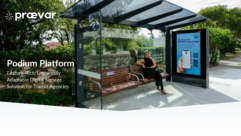Digital Signage Software Lament
The vast majority of digital signage software tools are designed with a power user in mind, or at the very least a user who will learn the application intimately and be responsible for its use. And although the tools range from simplistic to sophisticated, they all have something in common: They weren’t designed for the masses. And that’s a problem.
These days, even as the economy appears to be bottoming out, pro AV dealers and integrators are doing everything they can to keep the doors open and seize what business they can. This means, among other things, being very strategic with the partners they choose and offering clients the most they can for every dollar spent.
As I’ve said before, digital signage and pro AV make for a very unique marriage. Most of my company’s clients fall into one of three categories: corporate, education, and house of worship, with a smattering of niches thrown in. Our core client base is important to us, and the majority of the products and services we offer cater to those market segments. Within these segments, we have Fortune 1000 companies, as well as small- and medium-size businesses from all over the map. We have relationships with the largest corporations and the smallest mom-and-pops. So given all this, I find myself asking this question: Why are there so few (and I mean few) digital signage companies creating software that caters to our core customers?
When you look at all the digital signage software vendors out there–and there are literally hundreds to choose from–the majority create tools that work very well for the manager of an installed solution. These solutions, which fall into the class of digital messaging platforms, are designed to manage installations of just a few players or a hundred players. The tools I’m talking about, whether a single application or a set of applications, serve to present the signage network in some format and allow the manager to schedule and deliver content.
Unfortunately, the vast majority of these tools are designed with a power user in mind, or at the very least a user who will learn the application intimately and be responsible for its use. And although the tools range from simplistic to sophisticated, they all have something in common: They weren’t designed for the masses. And that’s a problem for my company, our clients, and digital signage adoption in the pro AV market.
The Average Digital Signage User
Let’s take a look at the average person responsible for getting messages out using a digital signage solution. Generally speaking, across our core customers, this person is not an artist, not an IT professional, and not devoted to digital signage on a daily basis. This user is someone who already has a lot of work to do, and in this present economy, probably does someone else’s work, too.
I call these people “content owners,” because they have the information that needs to be disseminated to the masses. And I call the resulting scenario “content creation by content owners,” in which these people not only own the message, they’re responsible for delivering it. These folks are the largest user community we sell to. But the applications being developed rarely cater to this user community. The software needs to be simple, straightforward, and concise. It has to be easily accessed from virtually anywhere in the organization, and by a user base that runs the entire gamut of computer skill sets.
Are there solutions out there that fit the bill? Absolutely, but only a few. Most of the good ones are Web-based, lending themselves perfectly to the “accessible anywhere” requirement. And with a Web-based solution, the application’s workflow is generally controlled, which helps address the ease-of-use requirement. Another defining characteristic of this class of user-friendly solutions is the inclusion of templates to make content creation as simple as choosing and filling in some information.
There are two ways to deploy user-friendly, Web-based digital signage solutions: a server-based model, in which the system resides on the client’s network, and the increasingly popular SaaS (Software as a Service) class. The SaaS concept has been around for a while. Over the past couple of years, it has garnered fresh interest, especially as it relates to digital signage, in part because of its potentially low cost of entry. Some of the largest players in digital signage are devoted to the SaaS model.
The biggest difference between SaaS and server-based software is that the latter offers more flexibility to tailor a solution to a particular company’s needs, provided the company is willing to devote the resources to the tailoring. With SaaS, what you see is basically what you get.
Now, the big boys of the digital signage industry are working many of the user-friendly features required by our core customers into their application road maps. But most of them don’t consider themselves to be in the digital messaging business. All the glitz and glamour is focused in the digital out of home (DOOH) market. You know, the one that’s made up of all those displays you see in train stations, airports, on the sides of buses, etc. Traditionally, these are advertising revenue-driven networks that represent the biggest, most visible win for digital signage technology. (They’re of dubious value to the average pro AV integrator because the challenge right now for software vendors is to drive down-way down-the cost per player, and thus the overall solution revenue.)
Because of the glory of DOOH, it gets most of the attention when it comes to application development. Many of the big vendors have opted to play in the DOOH space, ignoring the other completely. As a result, they’re creating applications that are sophisticated network management systems with little regard to ease of use; highly utility-oriented solutions that usually take teams of people to manage.
I think the real opportunity in this market is in the digital messaging space, where our core customers look to employ digital signage. I’m calling for a rethinking by the entire digital signage software industry to identify what the total population of users looks like and how they’re best served. By taking their applications to content owners with simplified interfaces and a workflow catered to that user, they will open up entire markets.
Kris Vollrath is vice president of Advanced AV in West Chester, Pa., an industry consultant, and frequent speaker on digital signage applications and technology.










